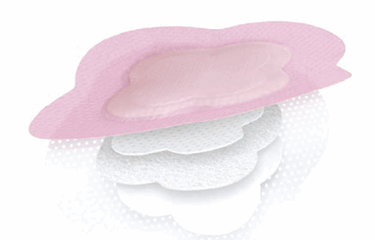Smith & Nephew Wound Dressing Reduces Incidence Of ICU Bedsores

A new protocol that incorporates Smith & Nephew’s (S&N) Allevyn Life can reduce the incidence of hospital-acquired pressure ulcers (HAPU) by 69 percent, according to a study conducted in an adult intensive care unit (ICU). Early treatment and prevention of HAPUs, better known as bedsores, was shown to reduce life-threatening complications and yielded significant cost-savings to the hospital, said study authors.
Pressure ulcers typically occur over bony prominences in a patient’s skin when that patient has been immobilized for long periods of time. In 2013, researchers in Dublin, Ireland analyzed U.S. Medicare data and found 4.5 percent incidence of HAPUs nationwide. In a study published by Evidence Based Nursing, study authors attributed HAPUs to longer hospital stays, a higher mortality rate, and said the condition was most common in older patients with co-morbidities.
A recent study published by the American Journal of Critical Care (AJCC) estimates that HAPUs cost the average hospital $38,000 annually and the U.S. healthcare system $3.8 billion per year. Because the condition is considered “preventable,” costs associated with stage III and IV HAPUs are not reimbursed by Medicare.
“Standard recommendations for prevention have helped drive down the incidence of HAPUs, but room remains for further improvement,” wrote the study authors, registered nurses Katie Swafford, Rachel Culpepper, and Christina Dunn. “Formal multi-factorial prevention programs are an additional tool that reduces the prevalence of HAPUs, but it is also important to take advantage of new technology. Use of prophylactic dressings has been identified as an emerging tool.”
The Eskenazi Health ICU in Indianapolis, where the three nurses work, recently instituted a HAPU prevention program that incorporated Allevyn Life, part of a suite of silicone foam dressings marketed by S&N. The study demonstrated that their program drove down incidence of HAPUs by 69 percent, even though patient load increased by 22 percent during the study. Overall, the prevention program saved the hospital over one million dollars in costs, claim the researchers.
“This study validates the need for a comprehensive, proactive, collaborative prevention program in hospitals,” said Culpepper in a press release. “Although it is difficult to isolate the effects of individual program components, silicone foam dressings can complement an existing pressure ulcer prevention program and are believed to contribute to the reduction of HAPUs.”
Bert Slade, chief medical officer in Advanced Wound Management at S&N, commented that the results demonstrated the need for HAPU prevention programs. “We welcome these findings and strongly believe they will help healthcare providers, clinicians and administrators to better manage the clinical and economic burden of HAPUs in similar settings worldwide.”
According to the National Institute of Health (NIH), another clinical trial currently is underway investigating the efficacy of Allevyn Life when used as part of wound care and prevention in a home healthcare environment. The study hopes to demonstrate that the product can reduce the number of in-home visits by caregivers without sacrificing patient safety.
In February, S&N CEO Olivier Bohoun noted that acquisitions in sports medicine and robotics, as well as investment in R&D, had accelerated growth for the company, which continues to shrug off rumors of a possible takeover.
